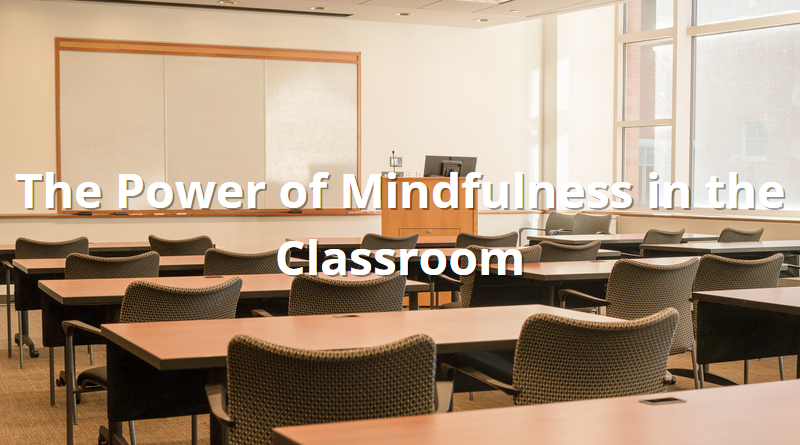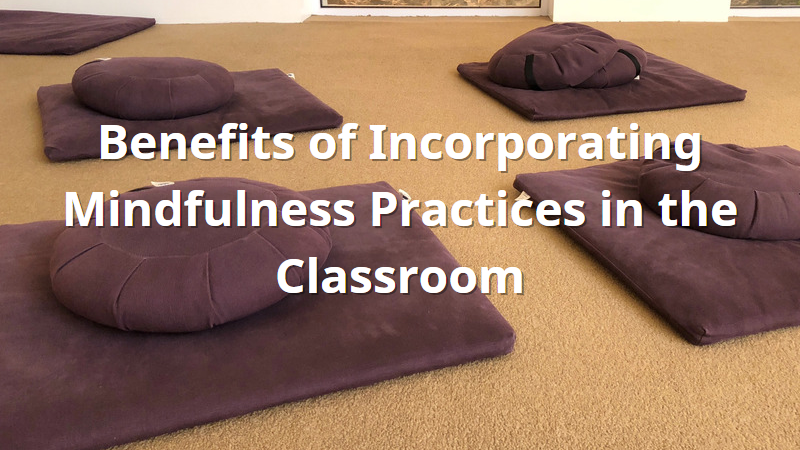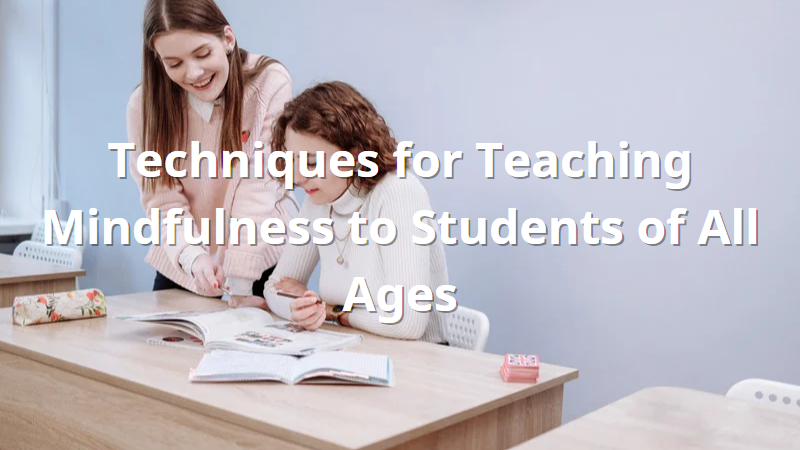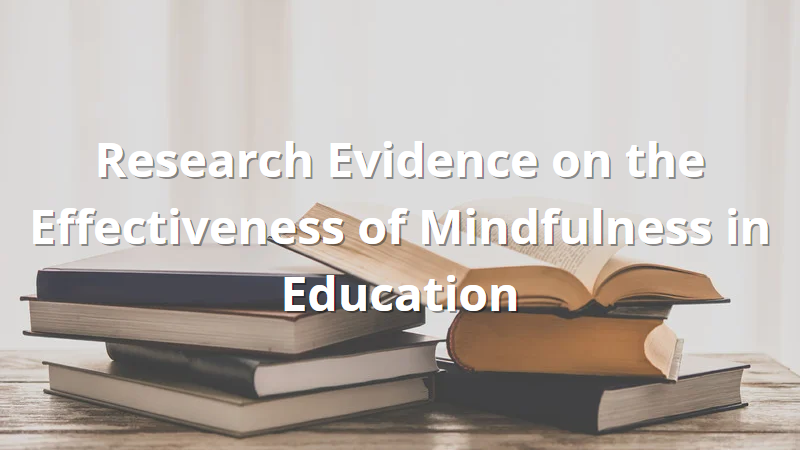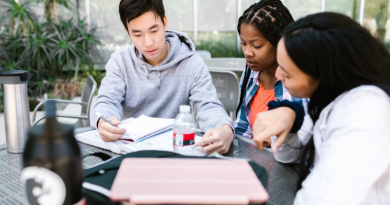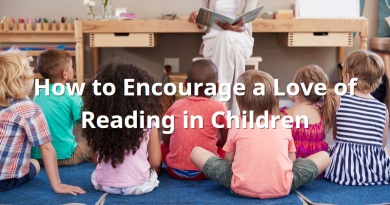The Power of Mindfulness in the Classroom
The Power of Mindfulness in the Classroom. As educators, we are constantly seeking ways to create a positive and productive learning environment for our students. One practice that has gained attention in recent years is mindfulness, which involves bringing our awareness to the present moment with a non-judgmental attitude. While traditionally associated with meditation and spiritual practices, mindfulness has increasingly been recognized as a valuable tool for improving mental health, reducing stress, and enhancing overall well-being. In the classroom setting, mindfulness practices can help students develop self-awareness, regulate their emotions, and improve their academic performance. In this article, we will explore the power of mindfulness in the classroom and how it can benefit both students and educators alike.
Incorporating mindfulness practices in the classroom can bring a wide range of benefits for both students and educators. Here are some of the key benefits:
- Improved Focus and Attention: Mindfulness practices can help students improve their ability to focus and concentrate, which can enhance their learning and academic performance.
- Reduced Stress and Anxiety: Mindfulness practices can help students manage stress and anxiety by promoting a sense of calmness and relaxation, and by teaching them how to regulate their emotions.
- Enhanced Self-Awareness: Mindfulness practices can help students become more aware of their thoughts, feelings, and actions, which can lead to greater self-understanding and self-acceptance.
- Improved Social Skills: Mindfulness practices can help students develop empathy, compassion, and kindness towards others, which can improve their relationships with peers and teachers.
- Better Decision-Making: Mindfulness practices can help students develop critical thinking skills and make better decisions by helping them stay focused, calm, and non-reactive.
2. How Mindfulness Can Improve Students’ Focus and Attention
Mindfulness practices can be effective in improving students’ focus and attention in several ways:
- Reducing Distractions: Mindfulness practices teach students to bring their attention to the present moment, which can help them avoid distractions from external stimuli or their own thoughts.
- Improving Working Memory: Mindfulness practices can help students improve their working memory, which is the ability to hold and manipulate information in the mind. This can help them retain and recall information more effectively.
- Enhancing Cognitive Flexibility: Mindfulness practices can help students develop cognitive flexibility, which is the ability to switch between different tasks or ideas. This can help them adapt to changing classroom activities and improve their problem-solving skills.
- Increasing Self-Awareness: Mindfulness practices can help students become more aware of their own thoughts and emotions, which can help them identify and manage distractions or negative thoughts that may interfere with their focus.
- Reducing Stress and Anxiety: Mindfulness practices can help students manage stress and anxiety, which can improve their ability to focus and pay attention in class.
3. Techniques for Teaching Mindfulness to Students of All Ages
Teaching mindfulness to students of all ages can be a powerful way to help them develop important social and emotional skills. Here are some techniques that educators can use to teach mindfulness to students:
- Breathing Exercises: One simple way to teach mindfulness is to have students practice breathing exercises, such as deep breathing or counting breaths. These exercises can help students learn how to regulate their emotions and reduce stress.
- Body Awareness: Encouraging students to focus on their physical sensations, such as the feeling of their feet on the ground or the sensation of their breath moving through their body, can help them become more present in the moment.
- Guided Meditations: Guided meditations can be a useful tool for teaching mindfulness to students, as they provide a structured framework for students to follow. There are many free guided meditations available online that educators can use in the classroom.
- Mindful Movement: Incorporating mindful movement, such as yoga or stretching, into the classroom can be a fun and engaging way to teach mindfulness to students. These practices can help students become more aware of their body and their breath, while also improving flexibility and balance.
- Mindful Listening and Speaking: Encouraging students to practice mindful listening and speaking can help them become more present in their interactions with others. This can involve exercises such as taking turns speaking and listening, or practicing active listening skills by repeating back what someone has said.
4. Research Evidence on the Effectiveness of Mindfulness in Education
There is growing research evidence on the effectiveness of mindfulness in education, with many studies suggesting that it can have a positive impact on student well-being, academic performance, and social-emotional skills. Here are some key findings from recent research:
- Improved Mental Health: Several studies have found that mindfulness practices can reduce symptoms of anxiety and depression in students, while also improving overall well-being and resilience.
- Better Academic Performance: Some studies suggest that mindfulness practices can improve academic performance, particularly in areas such as math and reading comprehension.
- Enhanced Social-Emotional Skills: Research has found that mindfulness practices can help students develop social-emotional skills such as empathy, compassion, and emotional regulation, while also improving relationships with peers and teachers.
- Reduced Stress and Burnout in Teachers: Mindfulness practices can also benefit educators by reducing symptoms of burnout and stress, while improving their overall job satisfaction and well-being.
- Long-Term Impact: A growing body of research suggests that mindfulness practices can have a long-term impact on student well-being and academic success, with benefits continuing to be observed several years after the initial intervention.
5. Overcoming Challenges and Implementing Mindfulness Programs in Schools
Implementing mindfulness programs in schools can be challenging, but there are several strategies that can help educators overcome these challenges. Here are some tips for implementing mindfulness programs in schools:
- Get Buy-In From Stakeholders: Before implementing a mindfulness program, it is important to get buy-in from school administrators, teachers, and parents. Educators can help build support by sharing research on the benefits of mindfulness, holding information sessions, and soliciting feedback from stakeholders.
- Develop a Clear Implementation Plan: A clear implementation plan can help ensure that mindfulness practices are integrated into the school day in a sustainable way. This might include identifying specific times for mindfulness practice (e.g., at the start of each class), selecting appropriate mindfulness practices for different age groups, and training teachers to lead mindfulness exercises.
- Provide Training and Support for Teachers: Teachers may need training and support to effectively integrate mindfulness practices into the classroom. This might include professional development workshops, coaching, and access to resources such as guided meditations and lesson plans.
- Engage Students: Engaging students in the mindfulness program can help increase participation and buy-in. This might include involving students in the selection of mindfulness practices, encouraging them to share their experiences with mindfulness, and providing opportunities for students to lead mindfulness exercises.
- Evaluate and Adapt the Program: It is important to regularly evaluate the mindfulness program to determine its effectiveness and make adjustments as needed. This might include collecting feedback from teachers, students, and parents, tracking changes in student well-being and academic performance, and making adjustments to the program based on feedback and data.
By following these strategies, educators can overcome challenges and successfully implement mindfulness programs in schools, ultimately promoting student well-being and academic success.

